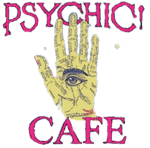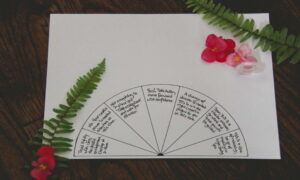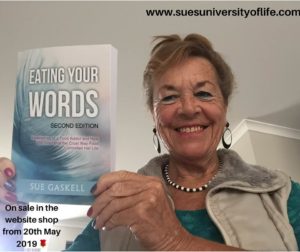By Dan Satherley
Ken Ring – genius ahead of his time or a complete fraud?
Since his claim he predicted the September and February Canterbury quakes ahead of time, and his warning of a quake “for the history books” on March 20, it’s been a question on the nation’s lips.
He’s become a household name in New Zealand. To some, Mr Ring is a prophet, a man whose ideas have been shunned by the establishment like those of Galileo. But to others – as TV3’s own John Campbell vividly illustrated – he’s a dangerous fool, a charlatan barely a step removed from astrologists and telephone psychics, instilling unwarranted fear into the poor folk of Christchurch.
So is there any validity at all to his moon-based methods, or is it just lunacy?
Let’s start with the establishment – in particular, the Government.
ACC Minister Nick Smith has a PhD in geotechnical engineering and a background in landslides and earthquake engineering.
Dr Smith told the National Business Review that Mr Ring’s predictions are “mumbo-jumbo nonsense”.
“Frankly, what Mr Ring is doing is no better than people crying fire without cause in a packed stadium or picture theatre.”
Many people have emailed 3 News and written comments mentioning Galileo, and how his ultimately true idea the Earth went around the Sun, and not the other way around, was rejected by the establishment at the time.
But it’s perhaps worth noting that for Galileo, way back in the early 17th Century, the establishment which repressed his ideas and sentenced him to house arrest was the Roman Inquisition – at the behest of the Catholic Church –not his fellow scientists. In fact, it was Galileo that developed much of what we now call the ‘scientific method’.
Luckily, the scientific community has also not been quiet on the matter. It’s not often such extravagant claims are made in the mainstream, let alone get the following Mr Ring has corralled in recent weeks.
Starting at the top, Sir Peter Gluckman, chief science adviser to the Prime Minister has rubbished Mr Ring’s claims.
“There’s no added risk of a quake on March 20 or any other day, and I think people do not realise the disharmony and the discomfort that is being given to a lot of people in the Christchurch regions by [predictions],” he said yesterday.
“Certainty as to a particular event or outcome just cannot be achieved. What therefore may happen, can only be described in terms of risks and probability.”
Many of his supporters would argue Mr Ring, who prefers to call his predictions “opinions”, is only warning of elevated risks – but do they stack up against the evidence?
David Winter, an evolutionary genetics PhD student at the University of Otago who has taken on Ken Ring before, thinks not. He says Mr Ring is the “very embodiment of… cargo cult science – someone who does some of the things scientists do, but fails in the most defining characteristic by not honestly testing his theories against data”.
Mr Winter points out that the earthquake Mr Ring predicted was at least five times stronger (7+ in magnitude, as opposed to 6.3), and that taking into account Mr Ring’s own prediction covered 10 days (February 15-25), giving his other predictions the same leeway ends with more days Christchurch residents need to be earthquake-ready than not.
“He paints more than half of the time between the start of January and the end of March as earthquake risk,” says Mr Winter (see Mr Winter’s graph on the right – red equals earthquake).
“We are too impressed by occasional ‘hits’ and tend to forget the many ‘misses’ which outweigh them.”
Mr Winter weakens Mr Ring’s theory further with a graph showing the total strength of quakes recorded each day between September 4 and February 22, matched with the moon’s monthly phases. Provided the input are correct, the output is damning – there is no correlation.
He found a slight effect of the moon’s distance from Earth in the region of 2 percent – enough to very slightly affect the potential strength of a quake, but not cause one.
“Even if the moon is sometimes the straw that breaks the camels back at a particular fault, you couldn’t use the moon to predict an earthquake unless you already new a fault was about to go,” says Mr Winter, “i.e the moon could only predict earthquakes when you could already predict an earthquake.”
On Mr Ring’s site, apart from the headline, his February prediction only mentions a quake is “sure to be somewhere in the ‘Ring of Fire’, where 80 percent of all major earthquakes seem to occur”, and if it is in New Zealand, could be “within 500km of the Alpine Fault”.
The Alpine Fault runs almost the entire length of the South Island. “Within 500kms” reaches as far up the North Island as Hamilton.
Geologists don’t appear to be spooked by Mr Ring’s predictions. According to NZPA, a group of geologists, alongside earthquake engineers, skeptics, Dr Smith and host of TV3’s The Nation,Sean Plunket, will be having lunch on the Port Hills(pictured right) to quell “unfounded fears”.
The Port Hills were heavily affected in February, ending up a metre taller than they were before.
Dr Mark Quigley, senior lecturer in active tectonics and geomorphology at Canterbury University, says Mr Ring’s March 20 warning is “opportunistic and meaningless self-promotion during a time of national crisis”.
“Consider this: Ken Ring’s probability of getting a prediction correct based on perigee/apogee new moon/full moon for 2010 was 63 percent. That’s 230 out of 365 days that fall on some day that he would argue influences earthquake activity… Should we evacuate an area every time the moon is on its closest approach, is full or new, is moving rapidly, is at its maximum declination or is crossing the equator?”
He acknowledges some research has shown small correlations between tides and “smaller, shallower continental earthquakes and ‘solid earth tides’,” but that, “typical earthquake-induced stress changes are about 100 to 1000 times greater than those induced by the tides”.
Dr John Beaven, crustal dynamics geophysicist at GNS Science says: “A simple analysis… of aftershock occurrence and the phase and distance of the moon shows that there is no obvious correlation between these parameters and the occurrence of large aftershocks.”
Mr Ring has a Twitter account where he posts some of his predictions. But not all – there was no mention of the September 4 quake until September 8, when he said there would be another “coming in six months”. Does the fact Canterbury shook again five and a half months later prove his methods are correct?
Well, only if his other predictions are also on the money – otherwise he just got lucky. The very next one he made was that Canterbury would suffer another quake on October 1. According to Geonet, the strongest shake Christchurch had that day measured 3.8 – less than one they had just yesterday – 4.0 – which Mr Ring didn’t predict. In fact, Christchurch has had aftershocks measuring at least 3.5 almost every single day since September 4, despite Mr Ring saying in October that they would end “probably around the end of November”.
Mr Ring’s other Twitter predictions don’t get much better. On November 18 he suggested the Auckland Santa Parade should move from the planned date of November 28 to December 5, as it’s going to be “wet wet wet”.
3 News weather presenter Mike Hall reported that evening it was a “springtime Sunday well worthy of summer”, and Auckland was going to have “another fine and warm one” the following day.
In mid December, Ken Ring tweeted that Queensland, Australia, would have a “mostly dry” January.
Over late December, and throughout January, Queensland suffered some of the worst flooding in its history, resulting in 35 deaths (Toowoomba, pictured right, was hit hard).
On February 27, Mr Ring said a “jolt” was “possible” in Christchurch between 3pm and 4pm.
According to GNS Science’s online earthquake record, that hour was one of five that day there were no quakes at all.
On Tuesday, Mr Ring predicted “potential for serious earthquake activity today in Japan”, four days after the massive 9.0 Sendai quake that triggered destructive tsunamis along the coast of Japan.
The strongest quake to hit that day measured 6 – a decent shake under normal circumstances, but weak compared to aftershocks recorded on Monday and Wednesday.
He did not tweet or write anything on his website about the possibility of a quake in Japan beforehand, despite his claim they can be predicted far in advance.
How far in advance? Well, after March 20, according to Mr Ring, it won’t be over. He’s further pinpointed April 18 and the year 2020 as future earthquake dates.
With his dubious track record though, one could hope he singles out popular doomsday date December 21, 2012 for his next ‘prediction’. It seems as good an indicator as any nothing will happen.
3 News





